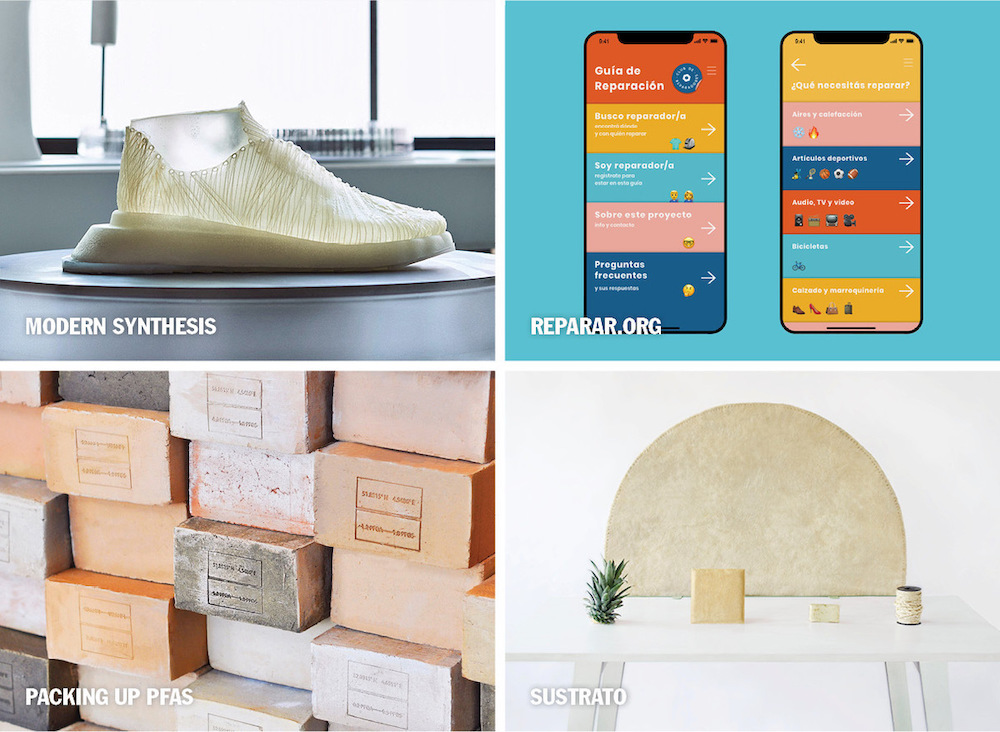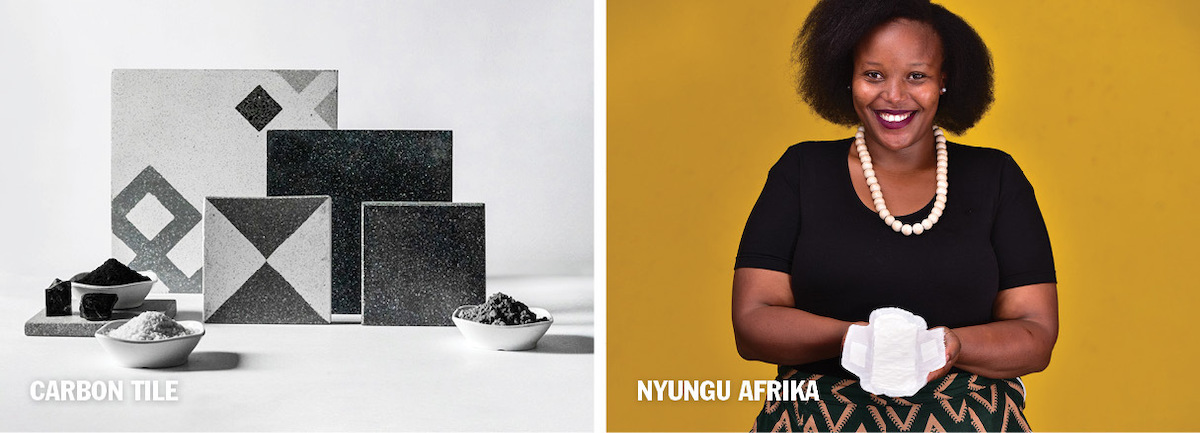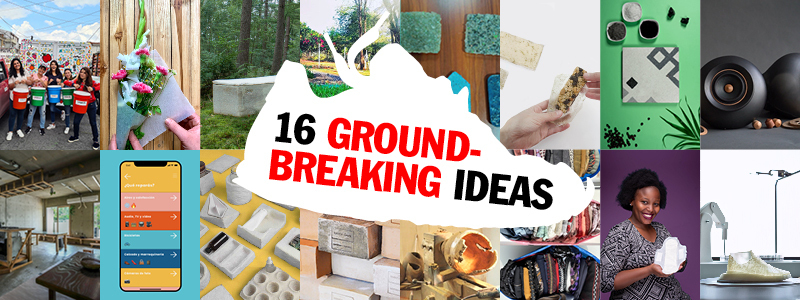What Design Can Do: No Waste Challenge
16 Ground-Breaking Ideas for a Circular Future
The wait is over: The winners of the global competition What Design Can Do (WDCD): No Waste Challenge — 16 Ground-Breaking Ideas for a Circular Future have been determined and were unveiled in a video ceremony attended by nominees and jury members. A total of sixteen winning projects were named across all categories, representing innovative strategies for reducing waste and its enormous impact on climate change. Initiated in partnership with the IKEA Foundation, the competition now enters an exciting new phase as finalists gain access to an award package designed to launch their ideas into action.
“The quality and range of entries we’ve seen in this Challenge is remarkable,” comments Richard van der Laken, co-founder and creative director of What Design Can Do. “In a turbulent year, this shows that the creative community is willing and able to break away from centuries of linear thinking and bad design. And through redefining our relationship with waste, these ideas also help us to recalibrate our relationship with design: looking at ways it can be restorative and regenerative, instead of merely productive or destructive.”
Tasked with selecting the winners was an international jury comprising twelve leading experts in design, entrepreneurship, and climate action. Working remotely over multiple sessions, the panel selected 16 winners from a list of 85 high-potential nominees. In the end, the jury of the No Waste Challenge based their decision on the official Challenge criteria of impact, creativity & design, feasibility, and scalability.
Among the winners are solutions that focus on the production process—aiming to revolutionize the taking and making of all the things we use and eat. Sustrato (Mexico), for example, combines traditional craft, contemporary design, and waste from the pineapple industry to develop a range of sustainable bioplastics. Modern Synthesis (UK) makes use of a similar waste stream—this time from apple farms—to feed microbes that grow fully circular fibers for the fashion industry. Meanwhile, working to clean up the construction sector are Carbon Tile (India) and Packing Up PFAS (Netherlands), two projects which offer innovative building materials that actually remove toxic pollutants and carbon dioxide from the environment.
Moving away from the factory floor, other winners are unified by their desire to uproot entire value systems. These projects are looking to prevent waste by addressing the underlying problem of consumerism. Reparar.org (Argentina) for example, is a service which connects individuals to local cobblers and repair shops, working to promote a culture of care and the right-to-repair. Similarly, Project R (Japan), is a community centre that empowers citizens to learn about circular techniques and lifestyles. Another disruption to throwaway culture is Nyungu Afrika (Kenya), a social enterprise hoping to make low-cost and biodegradable menstrual products the norm across Africa.
Together, these ideas suggest inventive ways for us to reconcile what we want with what the planet needs. Liz McKeon, Head of Climate Action portfolio at the IKEA Foundation, says: “A pillar of the IKEA Foundation’s mission is to reduce greenhouse gas emissions. One way is to find solutions for waste by tapping the creative power of design. As part of the jury, I was thoroughly impressed by the many great young entrepreneurs and creatives from around the world who submitted designs to tackle the root causes responsible for waste, and their determination to find solutions. I can assure you that even those who were not selected as winners will contribute just as much to creating a liveable planet for the many.”
INNOVATION WITH LONG-TERM VISION
Work now begins on strengthening each winning idea, and deepening their potential impact. Teams will receive € 10,000 in funding, and access to a development program co-created with Impact Hub Amsterdam. This program begins with a week-long bootcamp, and is tailor-made for the special blend of change-makers present among participants. Winners can expect mentorship on a range of skills they need to make their projects a success—from developing a viable business model, to impact-assessment, and networking. Combined with valuable exposure and publicity, the program is set to provide unique support for the thinkers, doers, and makers of the new economy.
ABOUT THE NO WASTE CHALLENGE
The No Waste Challenge is What Design Can Do’s third Climate Action Challenge in partnership with the IKEA Foundation. Launched in January 2021, the design competition called for bold solutions to reduce waste and rethink our entire production and consumption cycle. It was open to creative entrepreneurs everywhere and offered three design briefs tackling different aspects of the ‘take-make-waste’ economy. Additional tracks were also provided for participants in our partner cities: Amsterdam, Delhi, Mexico City, Nairobi, São Paulo, Rio de Janeiro, and Tokyo. The open call ended in April with an exceptional 1,409 submissions from innovators in more than 100 countries.
What Design Can Do: No Waste Challenge
Find further information about What Design Can do here. All projects can now be viewed on their platform.


